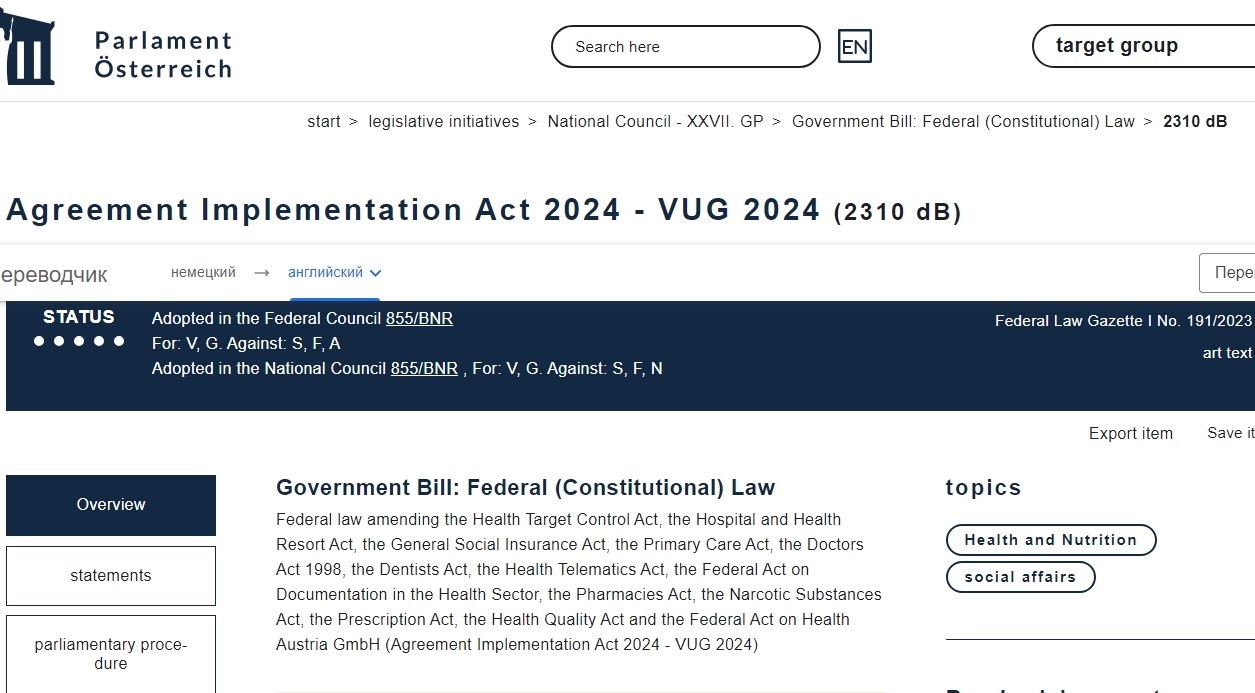Austria is a landlocked, high-income country in south-central Europe with a population of about 9 million people and an average life expectancy of 81 years in 2021[1]. The following extract from Austria: health system summary, published by the European Observatory on Health Systems and Policies, summarizes Austria’s health system.
Austria has a complex health system [and its governance is] divided between the federal and the regional level. The federal government is responsible for regulating social health insurance (SHI) and most areas of health care provision, while nine states (Länder) regulate and plan hospital care in their jurisdictions. [The States] are responsible for the implementation, organisation, and financing of inpatient and outpatient care in hospitals, as well as hospital investment. The organization of ambulatory care is largely delegated to the self-governing bodies of social health insurance (SHI) funds and providers which engage in collective negotiations on contracts and reimbursement. All hospitals are contracted collectively by the SHI funds, regardless of whether they are publicly or privately owned as long as they offer services covered by SHI-funds.
Funding and health expenditure
The health system is financed by general tax revenues and compulsory SHI contributions. Financing is fragmented with the federal level, regional level and SHI funds all contributing to the budget. SHI contributions represent the largest share of revenue (45% in 2019). Direct government spending constitutes the second largest share (33%), comprising mostly contributions by the states for inpatient care but also payments by the federal government, the Länder and municipalities for the costs of hospital care and long-term care, public health and preventive services, as well as contributions to SHI funds for the unemployed and for maternity benefits. Private spending accounts for the remainder, with voluntary health insurance playing a relatively minor role at just over 7% of this spending.
When compared to other national health systems across the EU [European Union], Austria’s health system is relatively expensive. As a share of GDP, Austria’s expenditure has remained relatively stable since 2010, and accounted for 10.4% of GDP in 2019, above the EU average of 9.9%. In 2019, per capita spending on health reached US$ 6134, which was the fifth highest in the EU… Health expenditure from public sources accounted for 75% of the total, below the EU average of 80%. The share of out-of-pocket payments has also been stable since 2010, and accounted for nearly 18% of total health spending in 2019, which is above the EU average (15%)[2].
References
[1] “Austria”. World Bank Open Data. Accessed 8 Mar. 2024.
[2] Bachner, Florian, et al. Austria: Health System Summary. European Observatory on Health Systems and Policies, 2022



